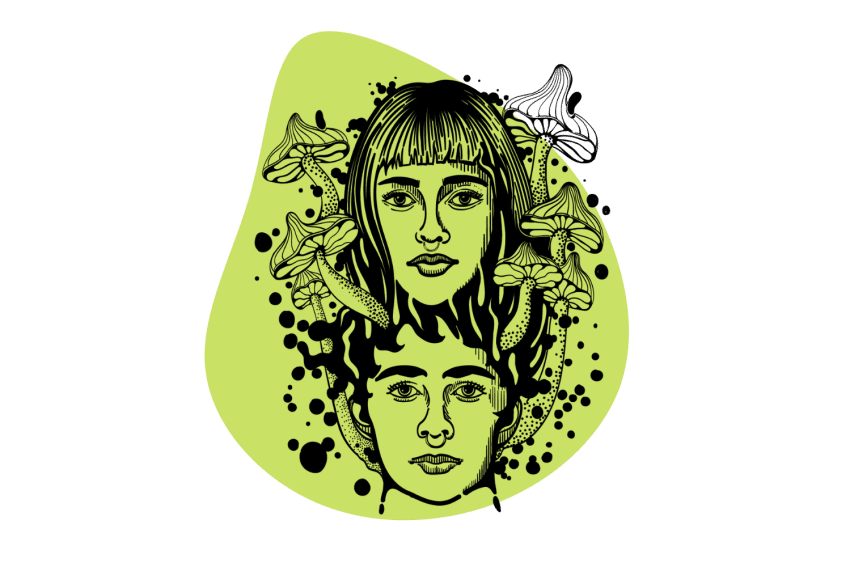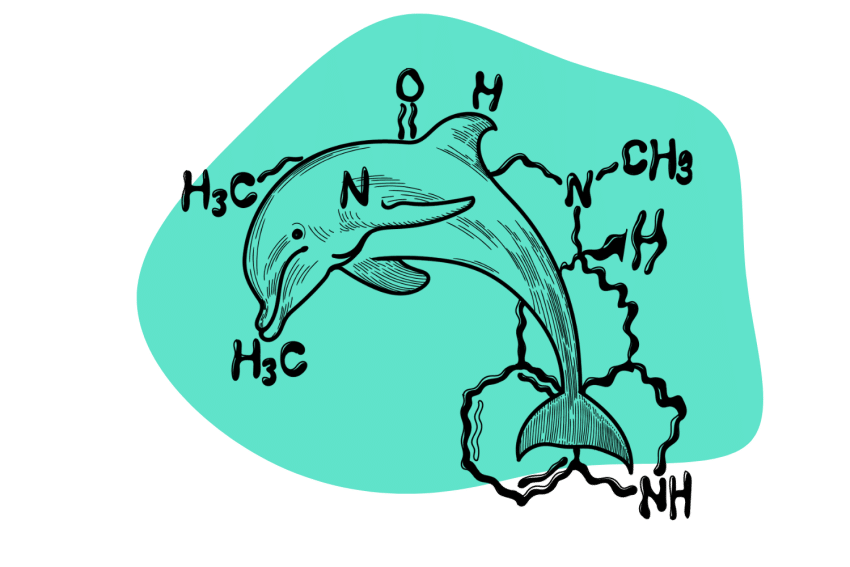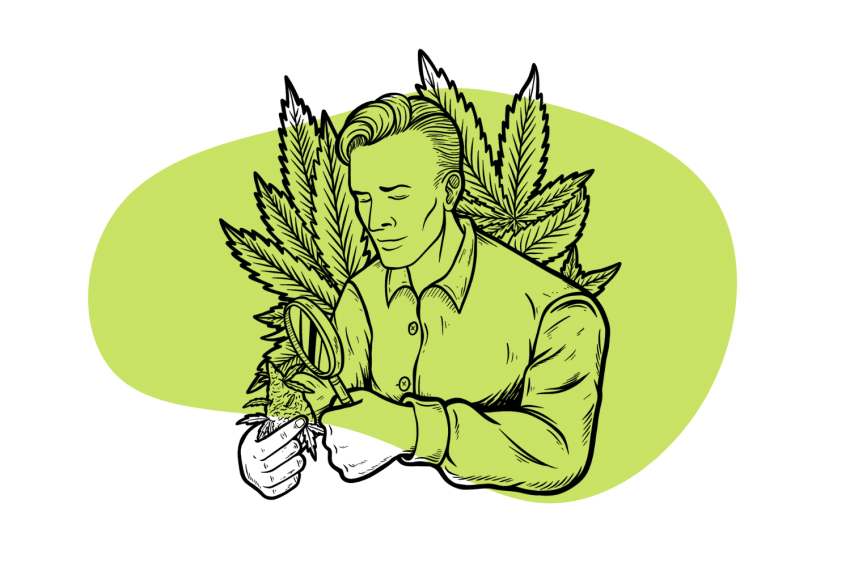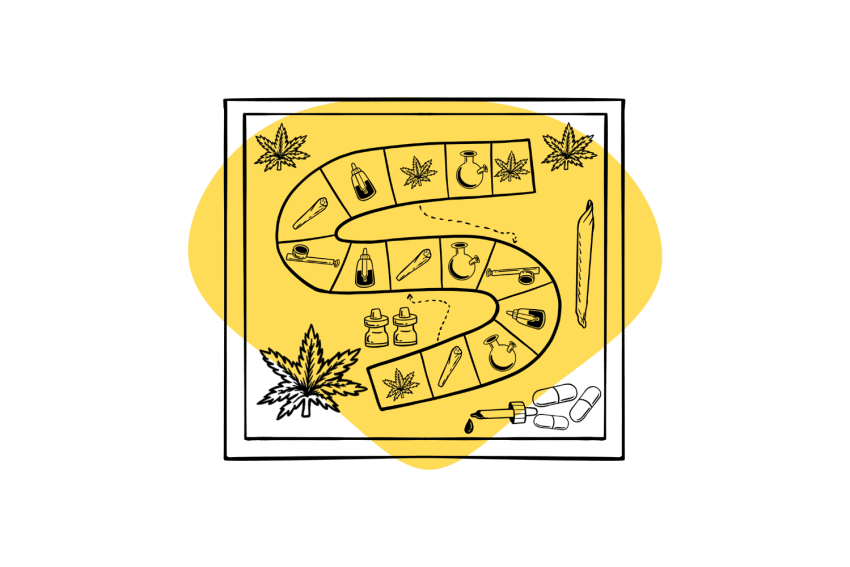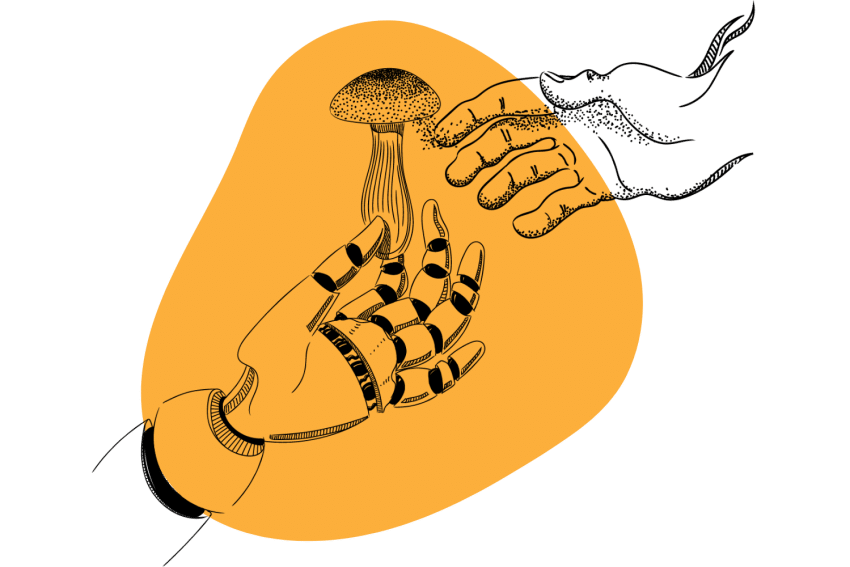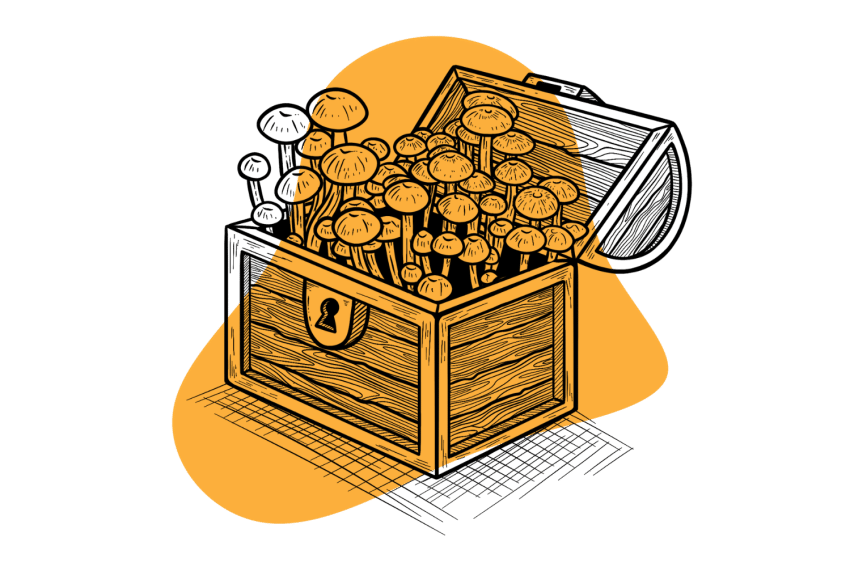Can Psychedelics Make Us Better Parents? We Think So…
Psychedelics uncover aspects of our psyche we’re unaware of and may help stop unconscious generational patterns we unknowingly pass on to our children.
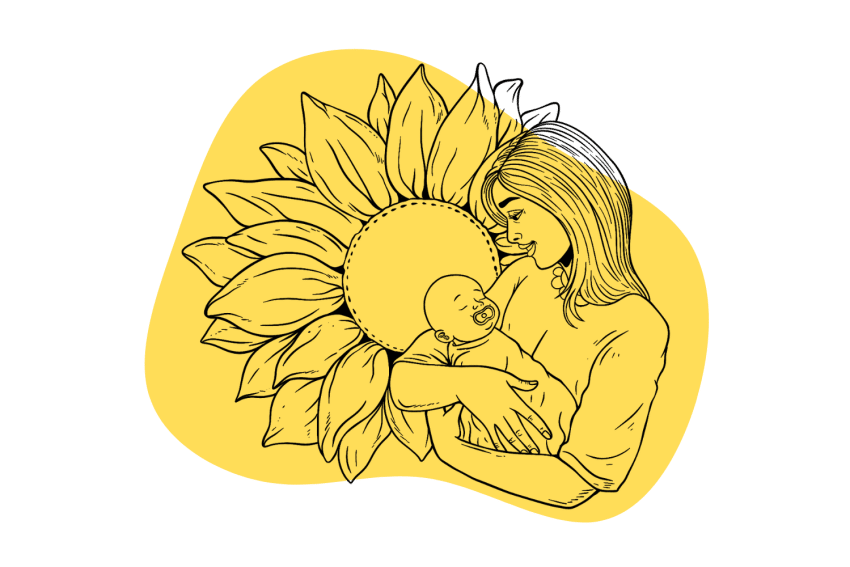
Parenting feels like a constant trip — non-stop chaos, confusion, uncertainty, absurdity, and little people that make you question yourself and reality. It has it all.
Psychedelic use is still far from mainstream, but using them (responsibly!) might be the best thing a parent can do for their kid. Research suggests hallucinogens like LSD and psilocybin can help break the cycle of generational trauma and improve mental health and wellbeing.
There’s also no doubt that those same issues can profoundly affect relationships. Unhealthy thoughts lead to unhealthy reactions and interactions — two things that make up a huge chunk of parenting.
Here’s a look at the positives and the negatives of psychedelics and how to use them safely if you decide to.
Making A Case For Psychedelics in Parenting
Thanks to the War on Drugs and decades of propaganda, most people still associate drugs like MDMA and shrooms with fringe groups bent on self-destruction. Is this true? No; research — and anecdotal evidence — claim otherwise.
Many people are finding success with psychedelics; it varies from person to person, but dig a little, and you’ll find an overwhelming number of success stories about improved focus, patience, creativity, sociability, memory, and mood [17]. Parents are jumping on the bandwagon in an effort to make lasting improvements in specific areas, often to deal with PTSD, anxiety, or depression, or simply for an overall adjustment.
The idea of a full trip often scares people — it’s quite a commitment in time and mental space — which is why microdosing is becoming so popular. While using larger amounts of a psychedelic usually produces more significant effects quicker, smaller doses can still cause long-lasting improvements without the hallucinations [18].
Most things in life aren’t black and white, and this is no exception. Certainly, some people have made up their minds one way or the other and believe psychedelics are a no-brainer and perfect for everyone or a big no and wrong across the board.
Unfortunately, there are many points to consider — you’ll have to weigh the pros and cons for yourself.

Resolving Personal Issues (Better Person = Better Parent)
In general, this is possibly the biggest reason to use psychedelics, especially as a parent. Life is hard enough without carrying the extra weight of past issues or mental health problems. Add the responsibility of another life, and that weight increases exponentially. It’s no longer just you who has to deal with it (of course, other people do too, but not the same way a child does).
Your child is your greatest motivation to be the best version of you possible. Psychedelics show great promise in treating depression, and psychedelic-assisted psychotherapy is becoming more popular because of it.
This doesn’t mean you’ll suddenly heal by dosing with your friends at the club, but hallucinogens can help when used properly.
In fact, you don’t even need to trip to get the benefits. Microdosing gives you lasting results without the hallucinations — you barely feel it.
Finding Creative Solutions to Complex Problems
Creativity is more than a fun and unique look at the world; it also helps you solve problems and leads to innovative ideas. Children bring along new problems every day, and they love to be entertained, so extra creativity can’t hurt. If you’re not a parent, you’d be surprised by the questions and situations that pop up when you have kids (like listening to kids argue about who breaths the loudest or wondering why jelly is on the ceiling). You really need to be able to think outside the box and roll with it if you want to survive.
Psychedelics unlock your mind and help increase creativity, which leads to greater problem-solving abilities — traits every parent needs.
Finding More Time for Yourself
All of that brings us to the next benefit — time alone. You know, where you can relax and be someone other than the boss and herder of little people.
Some people like to kick back and have a few drinks, and others prefer something more out there. However, most societies don’t consider drug use and alcohol use on the same level, so there are plenty of stigmas attached to the notion of tripping, even lightly, as a way to unwind. If you find yourself with a trusted group of people (or person) and have considered the consequences, it could be a good way to treat yourself.
Recreational use is different from medicinal use, so make sure you have thought it through and use them sparingly — they’re not a nightcap.
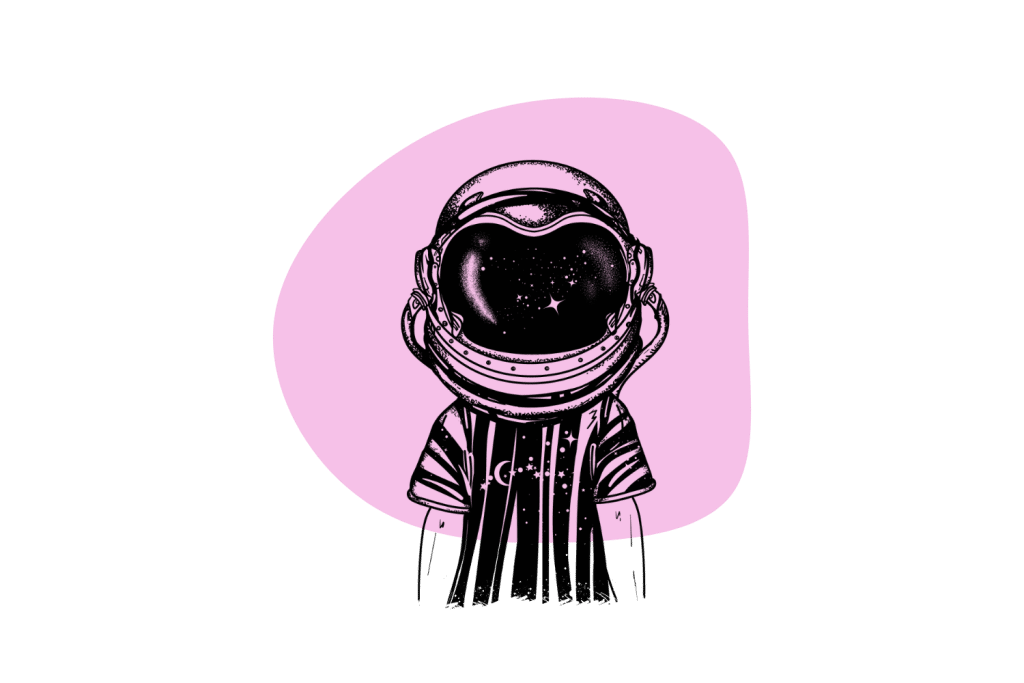
Replacing or Reducing Medications
This hinges on the previous section — if you’re healing your past, you’ll likely suffer less mentally and need fewer medications.
Because some psychedelics are so effective, it’s worth focusing on this aspect.
Many prescriptions carry horrible side effects, but people feel stuck using them because they think it’s their only choice. Depression and anxiety are prime examples, and often the results aren’t great. People still struggle.
When you compare the safety profile of anti-depressants and anxiolytics with shrooms, MDMA, and LSD, it’s almost night and day — despite what you’ve been led to believe.
Psychedelic use isn’t new, but strict laws have prevented proper research. Now, we see them in a different light as research shows they could easily replace current medications. Proper use, of course, is key, but once that’s established, they’re quite safe.
For example, recent studies have shown that psilocybin shows high efficacy in treating depression — even treatment-resistant depression — along with OCD, addiction, and end-of-life anxiety [12].
When used in a clinical setting, MDMA was shown to be more effective at treating PTSD than current therapies in both safety and efficacy [13]. The risk of overdose, diversion, and withdrawal symptoms is extremely low. Other psychiatric disorders with intractable symptoms respond well to MDMA treatment, including social anxiety in autistic individuals and end-of-life anxiety [14].
LSD and ketamine also share impressive safety profiles and show a high success rate for treating mental health disorders. Ketamine Clinics are widespread and used for treating depression and other mental disorders and pain.
Psychedelic Parenting: What Are the Risks?
Sounds easy to justify, right? Don’t jump to any conclusions quite yet. There are some weighty points to consider before taking the plunge. Some of these are only an issue with larger doses — microdosing won’t cause you to act irrationally, and there’s minimal risk of side effects. Laws, however, apply no matter the amount you take.
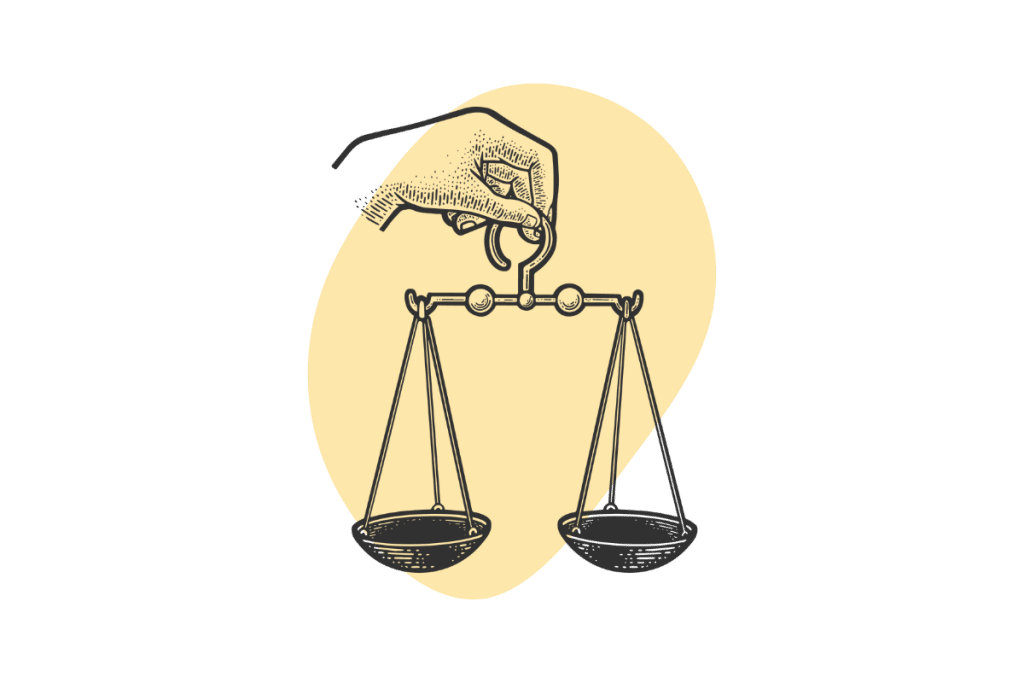
Legality Issues
This could be the most crucial aspect to consider. Before kids, maybe you were willing to take any risks associated with psychedelic use. Now, you have someone (or many someones) depending on you for absolutely everything from security and love to clothing, food, and shelter. Sound serious? Good. It is.
Depending on the laws where you live, you could face serious time for possessing and/or using psychedelics. Even if you don’t end up in jail, your kid(s) could be taken from you. Are you willing to lose your children over it?
Again, some situations may warrant such a risk, and only you can decide that. It’s a decision no one should have to make, but that’s what fear of the unknown gets us — laws based on assumptions instead of facts.
Health Complications
Treat psychedelics as you would any other medication. Consider the side effects, possible drug interactions, and how this can impact your life. Microdosing is often the best option, but the results can take longer. More significant amounts can cause more of a “reset,” but you have to make sure you’ll have a safe trip (see below for more information). The more you take, the more you increase the risks of severe complications. Anything that happens to you, good or bad, impacts your kids.
Greater Likelihood of Irresponsible Behavior
Again, this is only an issue if you’re using larger amounts that actually impair your thinking. Small amounts won’t be very noticeable.
Reckless behavior shouldn’t be an issue if you’re tripping properly (responsibly), but it’s good to consider because things happen.
What happens if you do something stupid while you’re tripping? Are you prepared to deal with the consequences? How will the weight of those consequences affect your child?
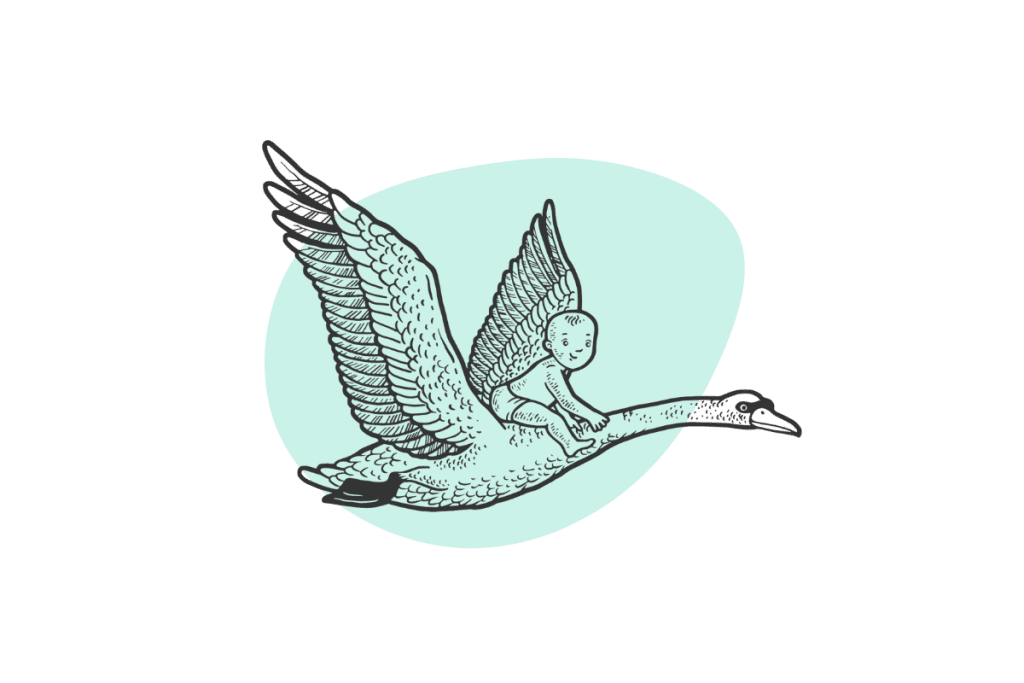
Microdosing: The Best of Both Worlds?
We’ve mentioned it a lot, so here’s what you need to know about microdosing or taking a very small amount of a substance. In the case of psychedelics, it’s not enough to cause hallucinations, and you likely won’t notice it at all. If tripping sounds too risky or unnecessary, this could be the answer.
We’ll cover the basics, but for more information, check out our guide to microdosing.
The Benefits of Microdosing
So far, there’s very little research on microdosing, but many people have found it increases the following:
- Productivity
- Focus
- Creativity
- Empathy
- Communication
- Self-awareness
- Energy
- Emotional wellbeing
- Problem-solving
These are on every parent’s dream list. If you have kids and don’t need these things, pass on your secret. Please. Self-awareness might be the only thing parents don’t lack, and that’s only because kids are so good at pointing out every fault, either verbally or through imitation.
Microdosing can also reduce cluster headaches, addictive behavior, depression, and anxiety [15].
The Drawbacks of Microdosing
Not everyone has satisfactory results with microdosing. Some people find their anxiety increases or their energy and focus decrease [16]. Others find their perception of time is altered — fun sometimes, but not when you have responsibilities.
Perhaps the biggest drawback lies in the fact that psychedelics are still illegal in most places. Laws are changing, but progress is slow, and a large portion of the population still looks down upon these drugs. Speak too openly about your usage, and you might find yourself under the scrutiny of local child protective services, even if the substance is legal where you live.
Ultimately, you won’t know how microdosing will affect you until you try it. Give it a shot if you think it could be beneficial.
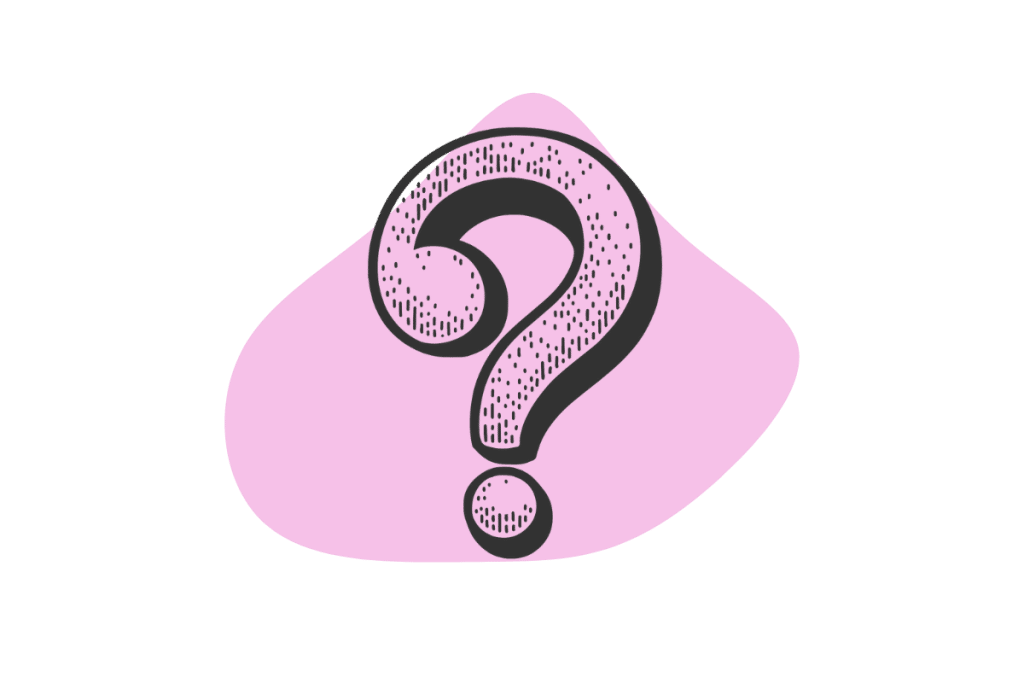
How to Microdose
If you decide to microdose, there are some things to have in place first so you can get the most out of it.
1. Choose the Right Dose
The dose is based on substance and body weight. Start small and wait 4 hours before you take more because it can take a while to hit you. The last thing you want is to trip when you’re not prepared. Here’s a standard starting range.
- Magic mushrooms: 200 mg
- LSD: 8 – 12 micrograms
- MDMA: 5 – 10 mg
2. Have a Plan
If you’re microdosing, it’s to solve a problem or for self-improvement. You won’t get far if you don’t know what you’re aiming for. Make a list of your goals and things you want to change, or try journaling. Shadow work is a great place to start if you’re looking to dig deep.
3. Set a Schedule
Choose a time of day and decide how often you’ll microdose. Plan for rest days, and back off a little if it seems too much. It might take some adjusting to find what works for you, but you’ll figure it out by tweaking the amount, time of day, and rest periods.
4. Implement Healthy Habits
Microdosing isn’t a cure-all. If your overall lifestyle is detrimental, you won’t find extra energy, less anxiety, and a better mood. You might need to change your eating habits, exercise more, drink less alcohol, seek therapy, or find supportive friends.

Tips For Using Psychedelics Responsibly As a Parent
Responsible use is paramount when using psychedelics, whether you’re a parent or not. This applies mainly to larger doses, but many of these are still crucial for microdosing.
Take the following precautions in order to make sure you’re safe.
1. Consider Laws & Consequences
We’ve covered this already but can’t emphasize it enough. Psychedelics are still very illegal in many places. Even if they’re decriminalized, the punishment might be more than what you want to deal with. Check out your local laws before you decide.
Try a legal psychoactive substance if you don’t want to take the risk.
2. Child Safety
Don’t have your child around if you’re going to trip or are new to microdosing. Even with small amounts, you don’t know for sure how it will affect you. Until you have dialed in the microdose and have plenty of experience, have your child under someone else’s care and away from you for 12 hours or so. Do this any time you plan to trip.
When your child is old enough, be open about psychedelics and how they help you.
3. Personal Safety
The following steps can help you use psychedelics responsibly.
Have a Trip Sitter
Before you take anything, make sure you have a reliable trip sitter or someone you trust that will stay sober. Even if you’re microdosing, have someone with you in case you take too much (when you’re first starting out).
Right Frame of Mind
If you’re in a bad place mentally, the trip probably won’t go well, defeating the purpose. Don’t be afraid to put it off for a day if you’re in a funk or don’t feel right.
Safe Location
You have to be around people you trust and in a place where you’re safe emotionally, mentally, and physically. Like the frame of mind, this can set the mood and make the trip good or bad.
Test Your Drugs
It doesn’t matter how well you know someone; test everything you get. Until these drugs are regulated, they’re too easy to taint with dangerous fillers. Test kits aren’t hard to use, and they’re relatively inexpensive — far cheaper than a trip to the ER or morgue.

Psychedelics & Pregnancy: What Does the Research Show?
You can find plenty of personal stories of women that swear they used hallucinogens during pregnancy with (seemingly) no adverse outcomes. However, no research backs this up. In fact, the little info we have says it’s not worth the risk. That said, some women struggle with uncontrollable depression or other mental health issues that psilocybin could help with. As with other potentially harmful medications, it’s crucial to weigh the pros and cons — sometimes, the fetus is more at risk without their use.
The following shows what we do know about the effects of specific hallucinogens during pregnancy. We’ll just look at the four most useful in psychedelic-assisted psychotherapy (more on that below).
Magic Mushrooms
A study on how psilocin (a compound in shrooms) affects pregnant rats showed it readily crossed the placenta, and blood-brain barrier, strongly suggesting use during pregnancy could be dangerous to the fetus [1].
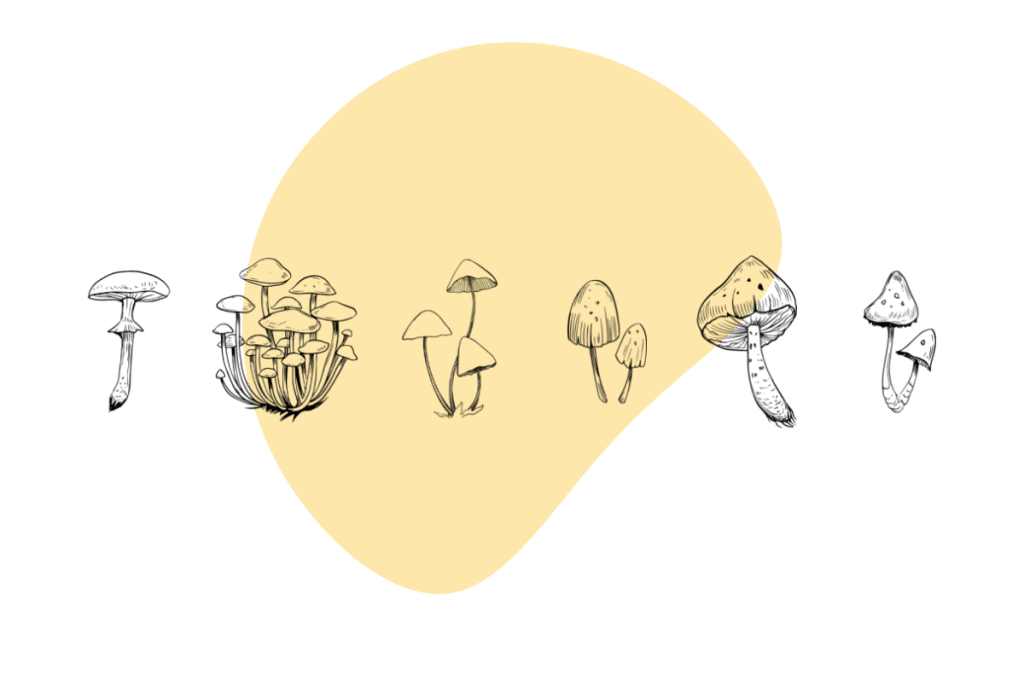
LSD
Though more research is needed to connect the two, LSD (lysergic acid diethylamide) seems to cause severe ocular malformations when used during pregnancy [2]. This includes cataracts, intraocular cartilage, retinal dysplasia, and hyperplastic primary vitreous.
Studies show LSD is a potent agonist on the umbilical artery and vein, restricting the placental blood flow from both the maternal and fetal side and significantly altering the exchange of nutrients and metabolites [3].
Other studies show LSD is an agonist for 5-HT2 and dopamine receptors and accumulates in the placenta [4]. It also has oxytocic effects on isolated rat uterine smooth muscle.
Ketamine
Subanasthetic doses of ketamine in pregnant women show a neuronal loss in the fetus’s brain, abnormalities of pyramidal neuron development, and overall detrimental effects on brain development, especially in the hippocampus and PFC [5]. Ketamine can enter the placental barrier and cause reduced cell proliferation in the hippocampus [6] and is associated with depression, anxiety, and memory impairment.
Maternal anesthesia with ketamine can cause cell apoptosis in the fetal brain and possibly cause brain damage and neurobehavioral abnormalities [7]. However, the dose and duration of exposure and the developmental stage played a role in the degree of neurotoxicity.
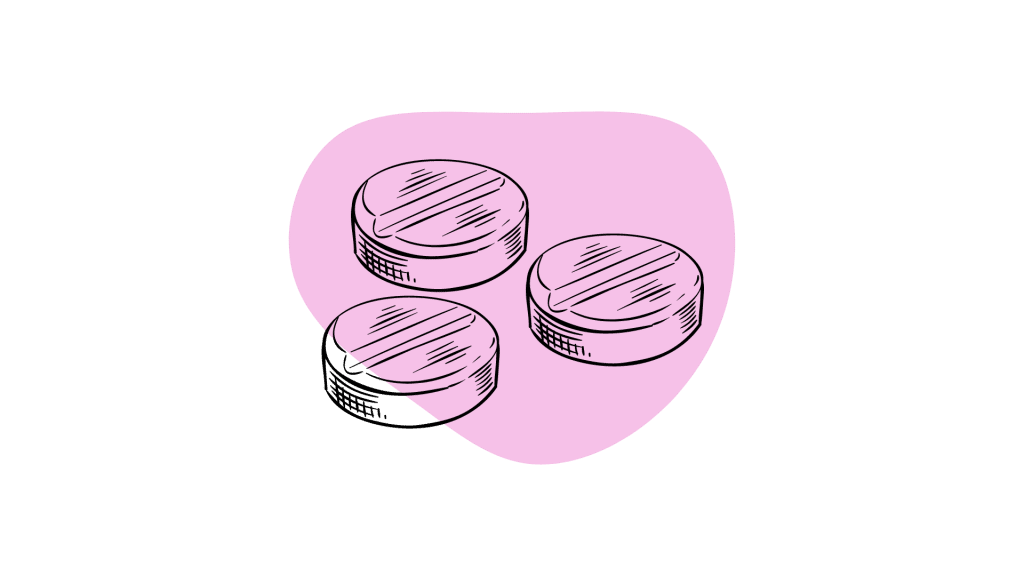
MDMA
If you know anything about MDMA (ecstasy or molly), there’s no shock that it’s linked to unplanned pregnancies.
Studies on rats show exposure to MDMA during development causes learning and memory impairment and hypoactivity as an adult, likely due to hippocampus disruption [8]. It also showed decreased birth weight, increased corticosterone levels, decreased serotonin levels, and increased sensitivity of the serotonin 1A receptor.
Other studies on rats show an increase in dopaminergic fiber density in the prefrontal cortex, striatum, and nucleus accumbens when exposed to MDMA prenatally [9]. These areas are critical for reward, attention, and locomotor functions and could change the behaviors associated with those functions in adult rats.
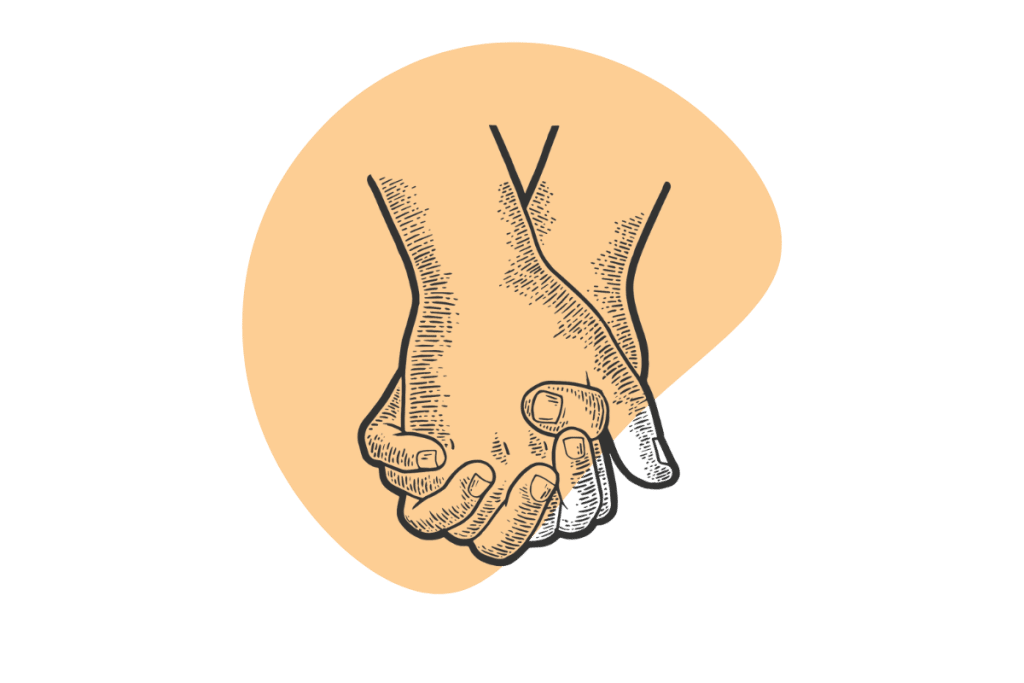
Conclusion: Should I Use Psychedelics As a Parent?
No one can answer this question for you, but hopefully, you now have the information you need in order to make the right decision.
It comes down to your comfort level with their legality, your needs, and if they help. You might decide to try a psychedelic (or two) and find that you don’t like it. Or you might decide that you don’t want to take the risk.
Weigh each point carefully while considering the effects on your child. And remember, whatever you decide, you can always change your mind.
References
- Law, F., Poon, G., Chui, Y. C., & He, S. X. (2014). 14C-Psilocin tissue distribution in pregnant rats after intravenous administration. Functional Foods in Health and Disease, 4(6), 232-246.
- Chan, C. C., Fishman, M., & Egbert, P. R. (1978). Multiple ocular anomalies associated with maternal LSD ingestion. Archives of Ophthalmology, 96(2), 282-284.
- Zhang, L., & Dyer, D. C. (1993). Lysergic acid diethylamide is a partial agonist at 5-HT2 receptors in ovine uterine artery of late pregnancy. European journal of pharmacology, 230(1), 115-117.
- Scott, K., & Lust, K. (2010). Illicit substance use in pregnancy–a review. Obstetric Medicine, 3(3), 94-100.
- Zhao, T., Li, C., Wei, W., Zhang, H., Ma, D., Song, X., & Zhou, L. (2016). Prenatal ketamine exposure causes abnormal development of the prefrontal cortex in rat. Scientific Reports, 6(1), 1-12.
- Li, X., Guo, C., Li, Y., Li, L., Wang, Y., Zhang, Y., … & Gao, L. (2017). Ketamine administered pregnant rats impair learning and memory in offspring via the CREB pathway. Oncotarget, 8(20), 32433.
- Zhao, T., Li, Y., Wei, W., Savage, S., Zhou, L., & Ma, D. (2014). Ketamine administered to pregnant rats in the second trimester causes long-lasting behavioral disorders in offspring. Neurobiology of Disease, 68, 145-155.
- Skelton, M. R., Williams, M. T., & Vorhees, C. V. (2008). Developmental effects of 3, 4-methylenedioxymethamphetamine: a review. Behavioural pharmacology, 19(2), 91.
- Thompson, V. B., Heiman, J., Chambers, J. B., Benoit, S. C., Buesing, W. R., Norman, M. K., … & Lipton, J. W. (2009). Long-term behavioral consequences of prenatal MDMA exposure. Physiology & behavior, 96(4-5), 593-601.
- Sofia, S. A. G., Agostinho, L. D. A., & Zélia, M. T. (2019). Benzodiazepines dependence: addiction to legally prescribed substances. J Foren Psy, 4, 149.
- Kopra, E. I., Ferris, J. A., Winstock, A. R., Young, A. H., & Rucker, J. J. (2022). Adverse experiences resulting in emergency medical treatment seeking following the use of magic mushrooms. Journal of Psychopharmacology, 02698811221084063.
- Chahar, Y. K. Unmet need in depression: Psilocybin, a breakthrough treatment option.
- Feduccia, A. A., Jerome, L., Klosinski, B., Emerson, A., Mithoefer, M. C., & Doblin, R. (2019). Breakthrough for trauma treatment: safety and efficacy of MDMA-assisted psychotherapy compared to paroxetine and sertraline. Frontiers in psychiatry, 650.
- Yazar‐Klosinski, B. B., & Mithoefer, M. C. (2017). Potential psychiatric uses for MDMA. Clinical pharmacology & therapeutics, 101(2), 194-196.
- Kuypers, K. P. (2020). The therapeutic potential of microdosing psychedelics in depression. Therapeutic advances in psychopharmacology, 10, 2045125320950567.
- Anderson, T., Petranker, R., Christopher, A., Rosenbaum, D., Weissman, C., Dinh-Williams, L. A., … & Hapke, E. (2019). Psychedelic microdosing benefits and challenges: an empirical codebook. Harm reduction journal, 16(1), 1-10.
- Cameron, L. P., Nazarian, A., & Olson, D. E. (2020). Psychedelic microdosing: prevalence and subjective effects. Journal of psychoactive drugs, 52(2), 113-122.
- Polito, V., & Stevenson, R. J. (2019). A systematic study of microdosing psychedelics. PloS one, 14(2), e0211023.

